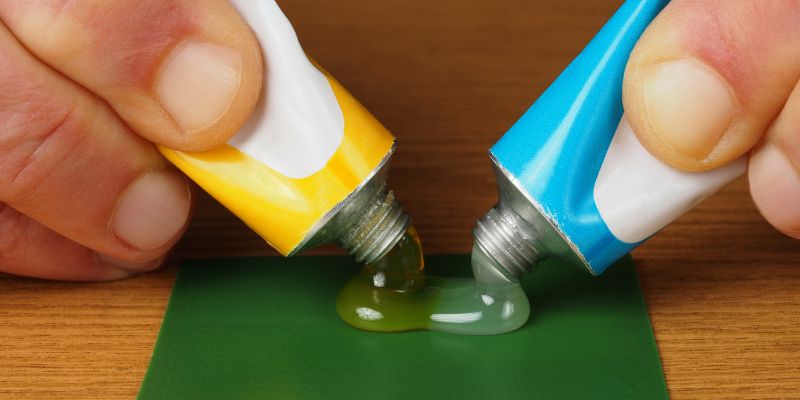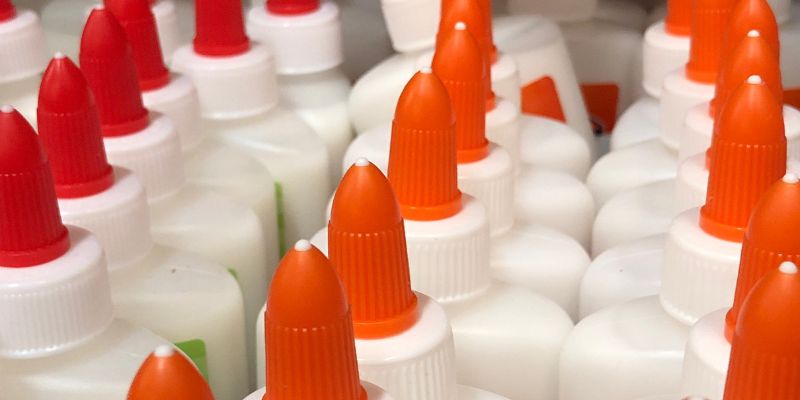Fish glue and hide glue are both types of animal-based adhesives commonly used in woodworking and restoration projects. Fish glue is made from the skin, bones, and scales of fish, while hide glue is derived from the collagen in animal hides.
Fish Glue
Fish glue is a unique adhesive that has been used for centuries in various industrial and artistic applications. Derived from the rich collagen found in fish skins, this adhesive offers a strong and reliable bond while being environmentally friendly. In this section, we will explore the composition and production of fish glue, as well as its benefits and applications.
Composition And Production
Fish glue is primarily composed of collagen, a natural protein found in the connective tissues of fish. Collagen is extracted from fish skins through a meticulous process that involves cleaning, soaking, and simmering the skins to separate the desired protein. The extracted collagen is then purified and processed into a gelatinous substance, which forms the basis of fish glue.
The production of fish glue is a delicate process that requires expertise and precision. The gelatinous substance is mixed with water and heated to a specific temperature, allowing it to dissolve and form a sticky adhesive. This adhesive is then filtered to remove any impurities, resulting in a clear and viscous glue that is ready for use.

Benefits And Applications
Fish glue offers a range of benefits that make it a preferred adhesive in many industries. Some of the key advantages of using fish glue include:
- Strong bond: Fish glue possesses excellent bonding power, allowing it to create durable and long-lasting connections between different materials. Whether you are working with wood, paper, ceramics, or even leather, fish glue can provide a strong and reliable bond.
- Environmentally friendly: As fish glue is derived from natural sources, it is considered to be an eco-friendly adhesive option. It does not emit harmful toxins or chemicals, making it safe for both users and the environment.
- Easy to work with: Fish glue has a low viscosity, which means it is easy to spread and apply on various surfaces. Its fluid nature allows for better penetration and coverage, ensuring that the adhesive reaches all the necessary contact points.
The versatility of fish glue makes it suitable for an array of applications. Some of the common uses of fish glue include:
- Bookbinding and paper restoration
- Woodworking and furniture-making
- Aquarium and fish tank assembly
- Artistic endeavors such as collage, decoupage, and gilding
In conclusion, fish glue is a unique adhesive that offers a strong bond while being environmentally friendly. Its composition primarily consists of collagen extracted from fish skins, and its production involves a careful process of dissolution and filtration. With its excellent bonding power and ease of use, fish glue finds applications in various industries and creative projects.

Hide Glue
Hide glue, a traditional adhesive, is known for its strong bonding properties. When comparing fish glue vs hide glue, hide glue is favored for its versatility and durability, making it a popular choice among craftsmen and woodworkers alike.
Hide glue is a type of adhesive that is made from animal hides, particularly from the connective tissues and collagen found in the skin of animals such as cows and horses. It has been used for centuries and is known for its strong bonding power and versatility. In this section, we will delve into the composition and production of hide glue, as well as its benefits and various applications.
Composition And Production
Hide glue is primarily composed of collagen, a protein found in the connective tissues of animals. The process of producing hide glue involves several steps. Firstly, the hides are soaked in lime to remove hair and other impurities. Afterward, the hides are washed, trimmed, and then simmered in water to extract the collagen. The extracted collagen is then purified through a filtering process and dried to form the final hide glue product.
| Composition | Production Process |
|---|---|
| The main component of hide glue is collagen, which is a protein. | 1. Soaking the hides in lime to remove impurities. 2. Washing and trimming the hides. 3. Simmering the hides in water to extract collagen. 4. Purifying the collagen through filtering. 5. Drying the collagen to form hide glue. |
Benefits And Applications
Hide glue offers several notable benefits and has a wide range of applications across various industries. Some of its key benefits include:
- High bonding power: Hide glue forms incredibly strong bonds, making it suitable for various woodworking projects, musical instruments, and even bookbinding.
- Easy to repair: Since hide glue is reversible, it allows for easy repairs and adjustments without damaging the original material.
- Natural and non-toxic: Hide glue is derived from natural animal sources, making it an environmentally friendly adhesive option.
Due to its versatile nature, hide glue finds application in a diverse range of industries, including:
- Woodworking: It is commonly used for joinery, veneering, and instrument making, as it provides a strong and durable bond.
- Restoration and conservation: Hide glue is often used in the restoration and conservation of antique furniture and artworks due to its reversible nature and compatibility with various materials.
- Bookbinding: It is a preferred adhesive for bookbinding due to its strength and ability to withstand aging over time.
- Orthopedics: Hide glue is also used in medical settings, particularly in orthopedic surgeries, for its biocompatibility and ease of use.
Hide glue’s versatility, strength, and natural composition make it a valuable adhesive option in various industries. Whether it’s for woodworking, restoration, bookbinding, or even medical applications, hide glue continues to prove its reliability as a bonding agent.
Frequently Asked Questions On Fish Glue Vs Hide Glue
Is Fish Glue Strong?
Yes, fish glue is strong. It is a reliable adhesive that offers excellent bonding capabilities.
What Is All About Fish Glue?
Fish glue is a type of adhesive made from fish collagen. It is commonly used in woodworking and repairing musical instruments. Fish glue offers high strength and has been used for centuries due to its durability. Additionally, it is non-toxic and safe for use in various applications.
Is Hide Glue Stronger Than Titebond?
Hide glue and Titebond are both strong adhesives, but hide glue is known to have superior strength. It has been used for centuries in woodworking due to its ability to bond tightly and withstand stress.
How Long Does Fish Glue Last?
Fish glue typically has a shelf life of around 1-2 years if stored properly. It is important to keep it in a cool, dry place to maintain its quality and effectiveness.
Conclusion
Fish glue and hide glue are both popular choices for various applications. While fish glue offers a strong adhesive bond and is derived from sustainable sources, hide glue provides excellent versatility and a long history of use in traditional woodworking.
Ultimately, the choice between these glues depends on the specific project requirements and personal preferences. Consider your needs and make an informed decision to achieve the best results.


